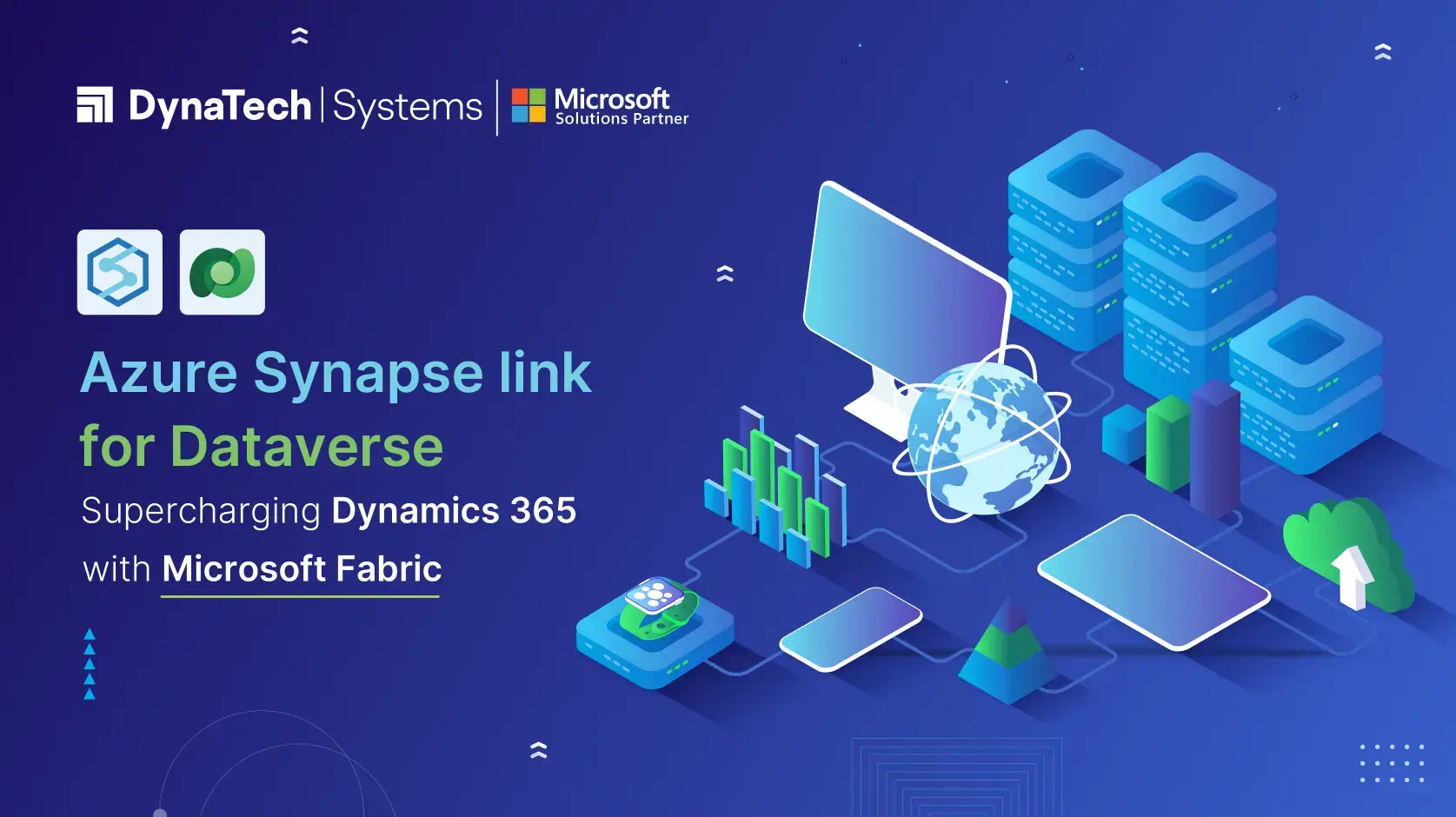When you think about the pace at which modern organizations generate data, it’s almost overwhelming. Customer interactions, operational workflows, transactions, and even real-time decision-making all leave behind digital trails. But the challenge lies in pulling this information together in a way that is both intelligent and actionable. This is where Microsoft has been steadily building an interconnected ecosystem — and the integration of Microsoft Fabric with Dynamics 365 and Dataverse is the latest milestone.
This blog explores how Fabric, Dataverse, and Dynamics 365 create a data symphony that empowers businesses. We’ll walk through why this integration matters, how Azure Synapse Link for Dataverse plays a pivotal role, and what opportunities Fabric data agents open up for analytics and decision-making.
Why Microsoft Fabric Matters in the Dynamics 365 Landscape?
Microsoft Fabric is best described as a conductor in an orchestra of data. Instead of letting information remain scattered across systems, it aligns and interprets the pieces into something usable. Unlike many older tools that left businesses wrestling with isolated databases and patchwork analytics, Fabric was created to function as a single stage where analytics, governance, machine learning, and collaboration all perform together.
Now imagine coupling that with Dynamics 365. These applications already run the heart of most organizations — managing customers, finance, supply chains, and day-to-day operations. Feeding this data into Fabric through Dataverse gives leaders something they often lack: a live, cohesive view of the business.
The payoff is practical and immediate — quicker reporting cycles, analytics that anticipate rather than react, and a platform where innovation feels less like an aspiration and more like a routine outcome.
Dynamics 365 and Dataverse: The Data Foundation
At the heart of this integration lies Dataverse, Microsoft’s secure and scalable data backbone for Dynamics 365 and Power Platform applications. If Dynamics 365 is the engine that powers business workflows, Dataverse is the fuel system that stores, normalizes, and connects data.
What makes Dataverse powerful is its ability to standardize information from multiple Dynamics 365 application. Whether it’s sales data from Dynamics 365 CRM, supply chain metrics, or financials, everything is stored in a consistent schema. This consistency ensures that when you begin to explore analytics or automation, you’re not dealing with conflicting structures or formats.
And when Fabric comes into play, this standardized data becomes a launchpad for enterprise-level insights.
The Role of Azure Synapse Link for Dataverse
One of the most transformative elements of this integration is Azure Synapse Link for Dataverse. Without diving into technical jargon, Synapse Link acts as a bridge between Dataverse and the world of big data analytics.Traditionally, moving operational data into a data warehouse required complex ETL processes — extract, transform, load. These workflows were time-consuming, error-prone, and often delayed reporting. Synapse Link changes the game by enabling near real-time data movement from Dataverse into Azure Synapse Analytics and now into Microsoft Fabric.
This means businesses can access up-to-date Dynamics 365 data for advanced analytics without the headache of constant data migrations. Imagine your sales leaders checking reports in the morning and knowing they are working with yesterday’s data at worst — not last month’s. For a deeper dive into Azure Synapse’s advanced analytics, explore our blog on Mastering Data Analytics with Azure Synapse: Your Path to Actionable Insights.
Fabric Data Agents: Discovering New Possibilities
The mention of Fabric data agents Dataverse has been gaining attention for good reason. These agents act as connectors, ensuring smooth data movement between Dataverse and Microsoft Fabric. Instead of requiring developers to build custom pipelines for every integration, data agents simplify and automate the process.
For companies that already rely on Dynamics 365 data integration, Fabric data agents take a lot of the heavy lifting out of the picture. Instead of building custom connectors or worrying about constant upkeep, these agents quietly manage the transfer of information between Dataverse and Fabric. The benefit isn’t just speed — it’s the reassurance that sensitive data is being moved in a controlled, reliable way. Think of them as the backstage crew of a performance: you rarely notice them, but the entire show would fall apart without their work.
Microsoft Fabric Dataverse Analytics in Action
So, what does this integration look like in real-world scenarios? Here are a few examples of Microsoft Fabric Dataverse analytics in action:
-
Customer 360 Views:
By combining Dynamics 365 CRM Dataverse integration with Fabric analytics, businesses can create comprehensive customer profiles. Every sales call, support ticket, or marketing interaction can be stitched together for a single-pane view. -
Predictive Operations:
Manufacturers can use Dynamics 365 data integration with Fabric to forecast supply chain bottlenecks before they occur. By analyzing real-time data against historical trends, they can proactively adjust procurement and logistics. -
Financial Health Dashboards:
Finance teams can pull Fabric-powered analytics into play by merging Dataverse data from Dynamics 365 Finance with inputs from other business systems. The outcome is clear, consolidated dashboards that surface profitability, cash flow, and risk indicators almost instantly rather than weeks later. -
Workforce Optimization
HR leaders can tap into the same approach by combining Dataverse records with workforce applications through Fabric. This makes it easier to forecast staffing needs, spot early signs of employee churn, and design smarter workforce strategies.
Each scenario underlines the same point: companies no longer have to wait for problems to show up. With Fabric and Dataverse working in tandem, they can recognize patterns early and take action before challenges escalate.
Dynamics 365 Data Integration with Fabric: The Strategic Angle
It’s tempting to focus only on the technical nuts and bolts of integration, but the real story lies in the business impact. Companies that move ahead with Dynamics 365 data integration through Fabric aren’t just getting better reports — they’re reshaping how decisions are made across the organization.
Executives gain quicker, more reliable insights that support long-term strategy.
Managers can track live metrics and adjust operations before small issues grow into bigger ones.
Employees work with systems that anticipate their needs and take care of repetitive tasks automatically.
Together, this creates a culture where data no longer sits trapped inside individual applications. Instead, it becomes a common resource that sparks collaboration and drives innovation throughout the business.
Governance and Security: The Silent Superpowers
Anytime data moves between systems, the first concern that comes up is security. Microsoft has addressed this head-on by building strong governance and compliance features into both Dataverse and Fabric.
Dataverse applies role-based security controls, making sure that sensitive Dynamics 365 CRM data is available only to the right people. Fabric takes it further with continuous monitoring, encryption, and recognized compliance standards. Together, they give organizations the confidence that their analytics environment remains protected, even in highly regulated fields such as healthcare, finance, or government.
Preparing for the Future of Data Ecosystems
As organizations continue their digital transformation journeys, the synergy between Dynamics 365, Dataverse, and Microsoft Fabric will only grow in importance. The future isn’t about whether companies should integrate — it’s about how fast they can leverage these tools to stay ahead.
One thing is clear: traditional data warehouses and standalone reporting tools will not keep pace with the speed and complexity of modern business. The move to integrated platforms like Fabric ensures agility, resilience, and competitiveness.
How to Get Started
If you’re considering diving into this integration, here are three steps to get started:
-
Evaluate Your Current Data Strategy
Take stock of where your Dynamics 365 and Dataverse data currently resides. Identify silos and pain points. -
Enable Azure Synapse Link for Dataverse
This step creates the bridge needed to flow Dynamics 365 data into Fabric, enabling advanced analytics almost instantly.Not sure when to make the move? Read our guide on Seize the Opportunity and Switch to Azure Synapse Link to understand why switching sooner rather than later can give you a competitive advantage. -
Leverage Fabric Data Agents
Automate and secure the flow of data using Fabric data agents for smooth integration.
With these steps, your business can begin unlocking the potential of Microsoft Fabric Dataverse analytics.
Conclusion: Making Data Work Harder for You
At the end of the day, the power of Microsoft Fabric for Dynamics 365 with Dataverse lies in its ability to turn complexity into clarity. By combining Dataverse’s standardized data model with Fabric’s analytics engine and Azure Synapse Link’s near real-time connectivity, organizations can move from hindsight-driven decision-making to foresight-driven strategy.
The question businesses should ask isn’t whether to integrate Fabric with Dynamics 365 and Dataverse, but how quickly they can do it before competitors seize the advantage.
At DynaTech, we specialize in guiding businesses through this transformation. With deep expertise in Microsoft Dynamics 365, data integration, and analytics, we ensure your systems not only talk to each other but work together to create a measurable impact. Whether it’s setting up Azure Synapse Link for Dataverse, deploying Fabric data agents, or creating Fabric-driven dashboards, we help you make data your biggest ally.
Your business already holds the data it needs — we make sure it speaks to you. With Microsoft Fabric, Dataverse, and Dynamics 365, DynaTech, as a Microsoft Dynamics 365 partner, helps you move from information overload to meaningful action. Let’s take advantage of the insights that actually change the way you work.




























